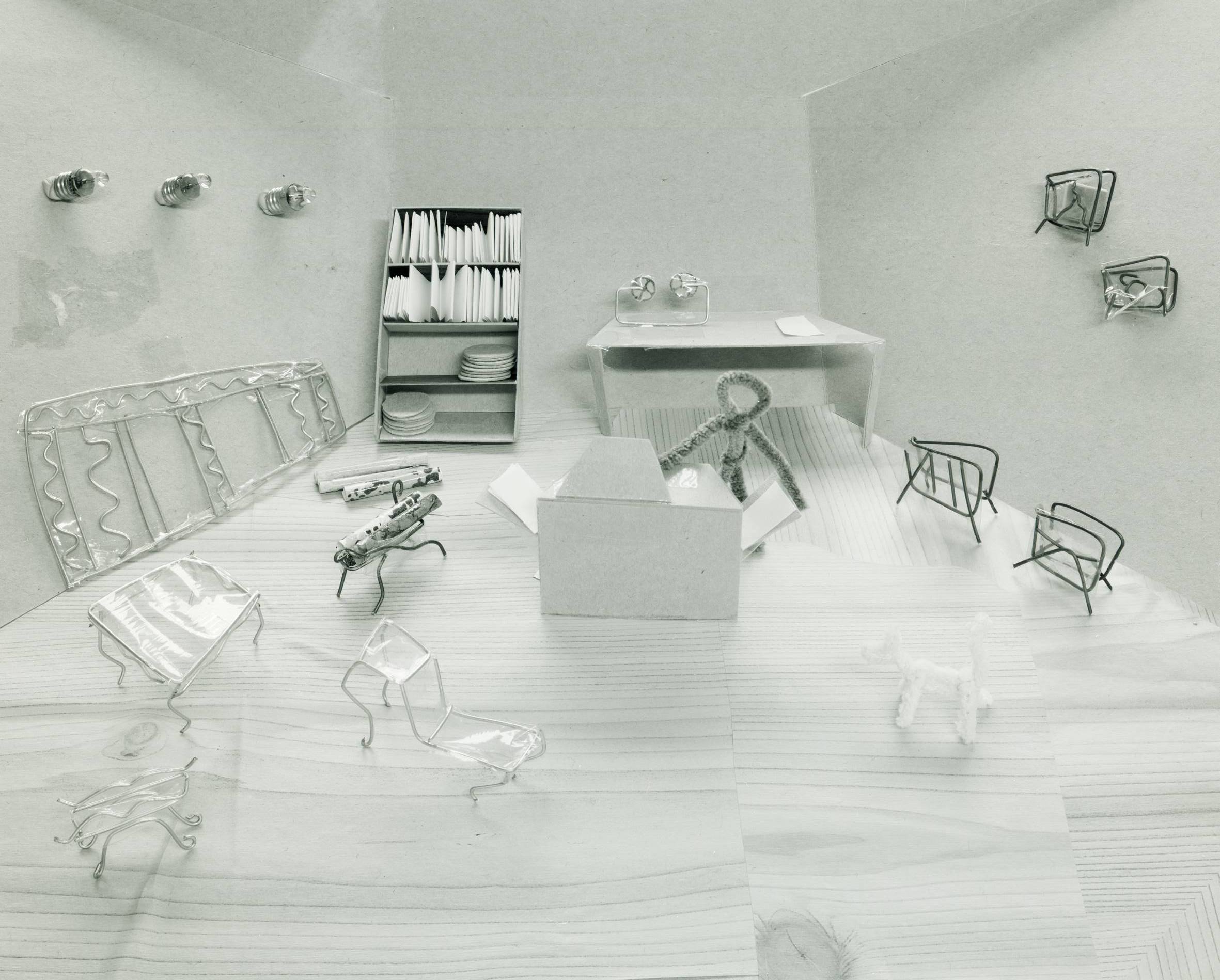(with Stuart McKenzie) Art New Zealand, no. 61, 1991.
In 1986, a photograph of Francis Pound appeared in the glossy pages of Metro. Formally dressed, New Zealand’s foremost art critic sits behind an empty gilt frame symbolic of an older order. Characteristically brandishing his signature cigarette like a magic wand, it is as though he has filled the gap by making something appear out of nothing—himself. While Phil Fogle’s photograph might seem pretentious, it could also be interpreted as a manifesto for the new art that emerged in New Zealand in the late 1980s. In a curious inversion of the axiom ‘nothing from nothingness comes’, the tricky inflation of nothing into something distinguishes the most eminent work of the period.
Marie Shannon sums up the new movement with photographs of the lives of the artists. Whether photographing them in their studios or homes, she presents the artist’s quarters as a frame. And what is framed is the artist. Two of the leaders of the new movement, Julian Dashper and Merylyn Tweedie, are among Shannon’s favourite subjects. Let’s look at three pictures and see what they tell us about the artists and their times.
In the Studio of Merylyn Tweedie (1991) catches the snappily-dressed Tweedie creating new post-feminist works at her photocopier. The presence of this machine betrays the new art’s preference for the degraded copy over the original. Tweedie is shown using the enlargement function. This exemplifies her strategy of blowing everything out of proportion. She is surrounded by wrought-iron furniture, some of which has already been transformed into art by being daubed with white paint and hung on the wall. Close inspection of the bookshelf behind her reveals titles by Jacques Derrida and Arthur Mee, two intellectual heavyweights. Nothing escapes theory. And it is precisely this nothing which Tweedie tries to track down in her work.
The new art relies on modern technology. Just as Tweedie is caught copying, Shannon catches Mr Dashper on the phone engaging in postmodernist discourse. In Portrait of Julian Dashper (1991), the artist is arranging for his best work to be sent to his dealer. Dashper does his best work on the phone—making sure his audience is kept up to date with the evolving critical context for his art. Dashper is shown surrounded by the marginalia of art practice, which he places at the centre of his work. Like Tweedie, he believes that nothing can be put into the picture. On the floor around him are bolts of printed fabric waiting to made into paintings, such as the one that hangs on the back wall. We also see stretchers, empty frames and packing materials. The framing, packing, and delivery of art, as object and idea, has been a recurrent theme of Dashper’s work. On the table sits a palette, a hand-held device painters used before the invention of the telephone.
In another study of Dashper—King for a Day (1991)—the artist has retired to his bedroom with the phone. He arranges himself centrally, framed by evidence of his recent success. A dog frolics at the foot of the bed, amused by the lampshade his master wears to soften the hard light of his bright ideas. The fabric of his quilt is an offcut from one of his latest works. In the background is a photographic blow-up of one of his favourite paintings, Velázquez’s The Toilet of Venus. Intriguingly, the little angel in this painting appears to have borrowed one of the empty frames from Dashper’s studio to hold up to his mistress. Also recumbent, Dashper on the phone echoes Venus with her mirror. But whether this is a deliberate construction on Shannon’s part or a coincidence is open to debate.
Shannon’s wide-angle lens captures every detail of the artist’s world. Shannon’s photographs, like Fogle’s classic set-up of Pound, may well become icons of their time. Shannon has made a name for herself as a documentary photographer. Her studies belong to a well-established genre of documentary photography. Like Lord Snowden or Marti Friedlander, she plays on the myth of the artist alone in his garret. But the pipe dreams of earlier times are not for her subjects. Shannon’s artists are wiry, but hungry only for recognition. Her photographs give them the perfect opportunity. Nothing is more contrived than the casualness of a documentary photograph, and in these pictures artists and photographer conspire in the construction of an identity. The artists have carefully arranged the clutter of their studios prior to the visit of the photographer. But Shannon has also constructed her own identity through these snaps. Pretending innocently to reflect what is before her, she has in fact left her stamp on the scene—as if the artists were mere pipe-cleaner figures that could be bent to her will.
.
[IMAGE: Marie Shannon In the Studio of Merylyn Tweedie 1991]
